Spring is in the air! As the temperature rises, we go for lighter footwear, exchanging our shoes for sandals, or going barefoot. It may have been a while since our feet had so much exposure - what can we do to benefit our feet and put a little spring into them?
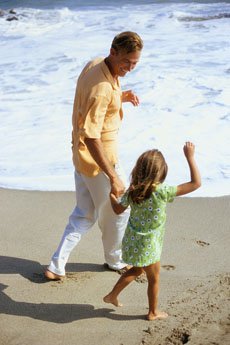
Babies and Toddlers
For babies, the question about ideal footwear is easily answered - a baby is best off barefoot so she can feel the stimuli of different contours and surfaces. These induce her to engage and strengthen her arch muscles as she learns to crawl and then walk. Minimize putting shoes on infants, as this inhibits the natural development of their feet and affects their learning to move and walk well.
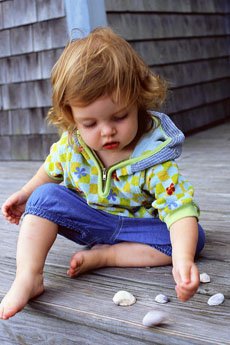
Toddlers and older children, as they venture into unfamiliar or less friendly terrain, may need protection for their feet. For any age group, choose a shoe that allows the foot to retain its natural kidney-bean shape.
Choosing Healthy Footwear
Avoid shoes that point or curve the big toe away from the inside edge of the foot. Heels that are higher than 1-2 inches pitch your weight forward onto the ball of the foot – avoid shoes with very high heels.

Well-designed shoes have a kidney-bean shaped footprint, pronounced arch supports (unless your feet are super strong and/or you're paying attention to your gait), and shock-absorbent soles
Healthy Foot Practices
Adults sometimes develop foot problems like bunions despite wearing well-shaped shoes. They may even see this as something that runs in the family – “my mom’s feet are exactly the same”. While it is true that our genes predispose us to certain problems, often it is poor postural habits that actually allow structural problems to develop. For example, if we have copied how our parents stand and now also park our pelvis forward and lock out our knees, then an excessive amount of our weight will fall on the front of the foot.
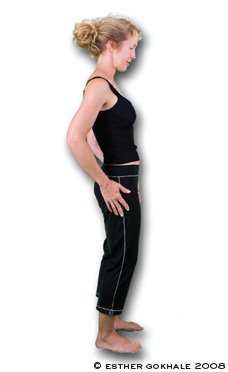
A pelvis thrust forward displaces body weight forward and puts excessive pressure on the delicate structures in the front of the foot
This is problematic because it flattens the transverse arch and causes distortion through the delicate joints of the forefoot – result: bunions, hammer toes, sesamoiditis, metatarsalgia, etc. It is the sturdy heel bone with its dense, cross-fiber construction that is perfectly adapted to take most of our weight. In Lesson 3 of the Gokhale Method Foundation course, when we teach this shift in tallstanding, most people feel somewhat odd, and have to reassure themselves that they don't look odd by looking at their reflection in a mirror!

The heel bone in our species is a sturdy bone adapted for weight-bearing. The bones in the front of the foot, by contrast, are delicate and not constructed to bear the weight of the body.
Bear in mind that our ancestors continually exercised their feet by walking on softer, more contoured surfaces than we encounter today. Compared with a hunter gatherer's foot, the modern urban foot tends to be underused and weak. Flat, or pronated feet misalign our ankles, which results in misaligned knees and hips, wear-and-tear, and arthritic change in the lower body.
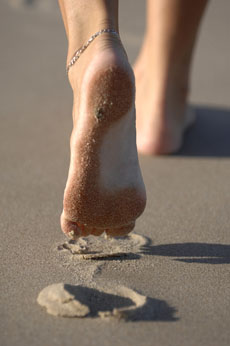
Walking barefoot on the beach - depending on how you do it, this can be great foot exercise or destructive for the ligaments of your feet.
Supportive foot-beds, orthotic insoles, and arch supports can be a real help in correcting this sort of distortion. However, while shoe inserts do help to reshape the arches and restore mechanical advantage to the foot muscles, they are no substitute for learning to actively reshape, exercise and engage the feet. The inchworm exercise below is a great way to begin strengthening important muscles in your feet. After you master this exercise, integrate it into every step you take - grip the ground ahead of you, "pull" the ground towards you and then "push" it behind you. This builds the kind of strength and spring you want from your feet, and an elegant glidewalk will result from it!

Click here to watch.
Best,
Esther


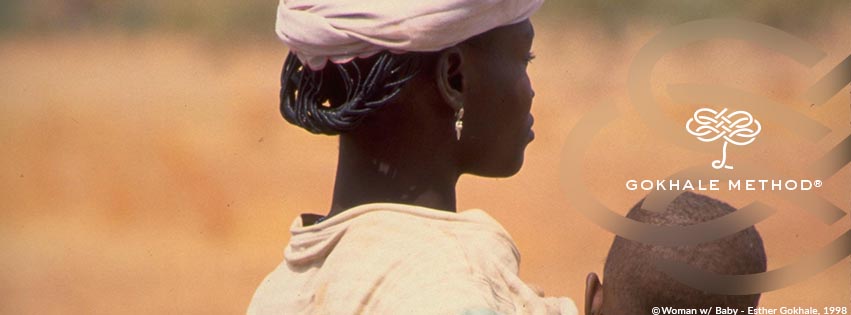
Comments
Thank You !! I have been
Thank You !! I have been doing reflexology a long time. Love the Foot Knowledge!!!!!
My experience is that
My experience is that bodywork of almost any kind on the feet feels wonderful. Glad you've found something that you like!